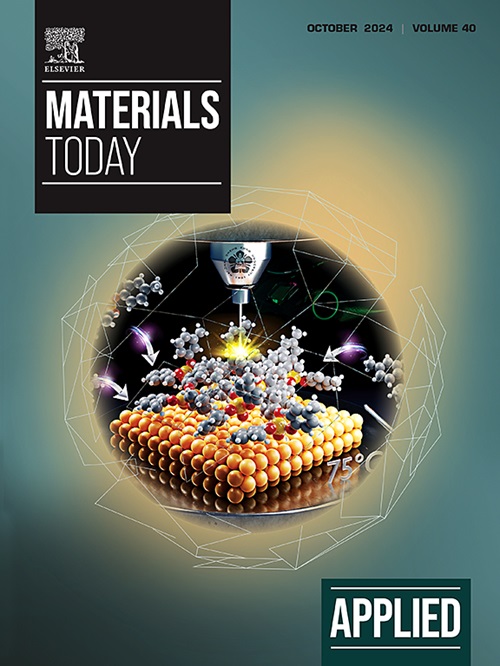Singular tungsten disulfide core-shell and pure tungsten nanostructures
IF 6.9
2区 材料科学
Q1 MATERIALS SCIENCE, MULTIDISCIPLINARY
引用次数: 0
Abstract
The first potentially scalable synthesis of core-shell tungsten disulfide (WS) nano-onions comprising a pure-tungsten core encased in WS shells (W@WS) is reported. Although W@WS nano-onions were achieved in earlier studies, all methods engendered practical drawbacks such as the need for toxic reagents, inherently customized small-scale processes, long reaction times, complex multi-step processes, and long reaction times, which precluded commercialization and widespread impact. Here, a promising, novel and scalable alternative is depicted which surmounts the limitations of previous procedures: the one-pot, catalyst-free, safe, rapid, high-temperature lamp ablation method, which starts with precursor 2H-WS, and is devoid of toxic chemicals. The major applications are exceptional solid lubricants stable at high temperatures, and excellent catalytic activity. Moreover, pure tungsten web-like nanostructures never before observed or predicted were found among the products - a finding of basic scientific value, awaiting the identification of major applications. Hollow WS nano-onions and nanotubes also emerged, but in far smaller quantities, and for understandable reasons that are addressed. Electron micrographs and a variety of material characterization methods permitted deducing reaction mechanisms that entailed (a) WS decomposing into elemental sulfur and tungsten, and, in parallel, (b) WS exfoliating into nano-platelets that bent and closed upon themselves. Some tungsten nanospheres independently conjoined to form the yet undiscovered pure-tungsten nano-webs. The formation of molten tungsten at temperatures well below the bulk's melting point was accounted for from the substantial melting-point depression as nanosphere diameter decreases.奇异的二硫化钨核壳和纯钨纳米结构
本研究首次报道了具有潜在可扩展性的核壳二硫化钨(WS)纳米离子的合成方法,该方法由包裹在 WS 壳(W@WS)中的纯钨核组成。尽管在早期的研究中已经实现了 W@WS 纳米离子的制备,但所有方法都存在一些实际缺点,如需要使用有毒试剂、固有的定制化小规模工艺、反应时间长、多步骤工艺复杂以及反应时间长等,因此无法实现商业化并产生广泛影响。本文介绍了一种前景广阔、新颖且可扩展的替代方法,它克服了以往工艺的局限性:单锅、无催化剂、安全、快速、高温灯烧蚀法,该方法从前驱体 2H-WS 开始,不使用有毒化学品。其主要用途是在高温下稳定的特殊固体润滑剂和出色的催化活性。此外,在产品中还发现了以前从未观察到或预测到的纯钨网状纳米结构--这是一项具有基础科学价值的发现,有待确定其主要用途。空心钨丝纳米离子和纳米管也出现了,但数量要少得多,原因也可以理解。电子显微照片和各种材料表征方法可以推断出以下反应机制:(a) WS 分解成元素硫和钨,同时,(b) WS 剥离成纳米小板,这些小板自行弯曲和闭合。一些钨纳米球独立地结合在一起,形成尚未发现的纯钨纳米网。随着纳米球直径的减小,熔点大幅降低,这说明钨熔体是在远低于块体熔点的温度下形成的。
本文章由计算机程序翻译,如有差异,请以英文原文为准。
求助全文
约1分钟内获得全文
求助全文
来源期刊

Applied Materials Today
Materials Science-General Materials Science
CiteScore
14.90
自引率
3.60%
发文量
393
审稿时长
26 days
期刊介绍:
Journal Name: Applied Materials Today
Focus:
Multi-disciplinary, rapid-publication journal
Focused on cutting-edge applications of novel materials
Overview:
New materials discoveries have led to exciting fundamental breakthroughs.
Materials research is now moving towards the translation of these scientific properties and principles.
 求助内容:
求助内容: 应助结果提醒方式:
应助结果提醒方式:


